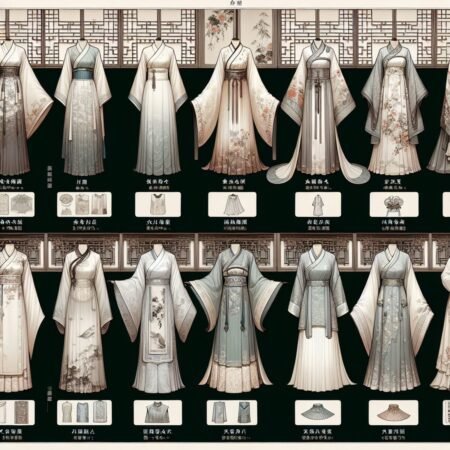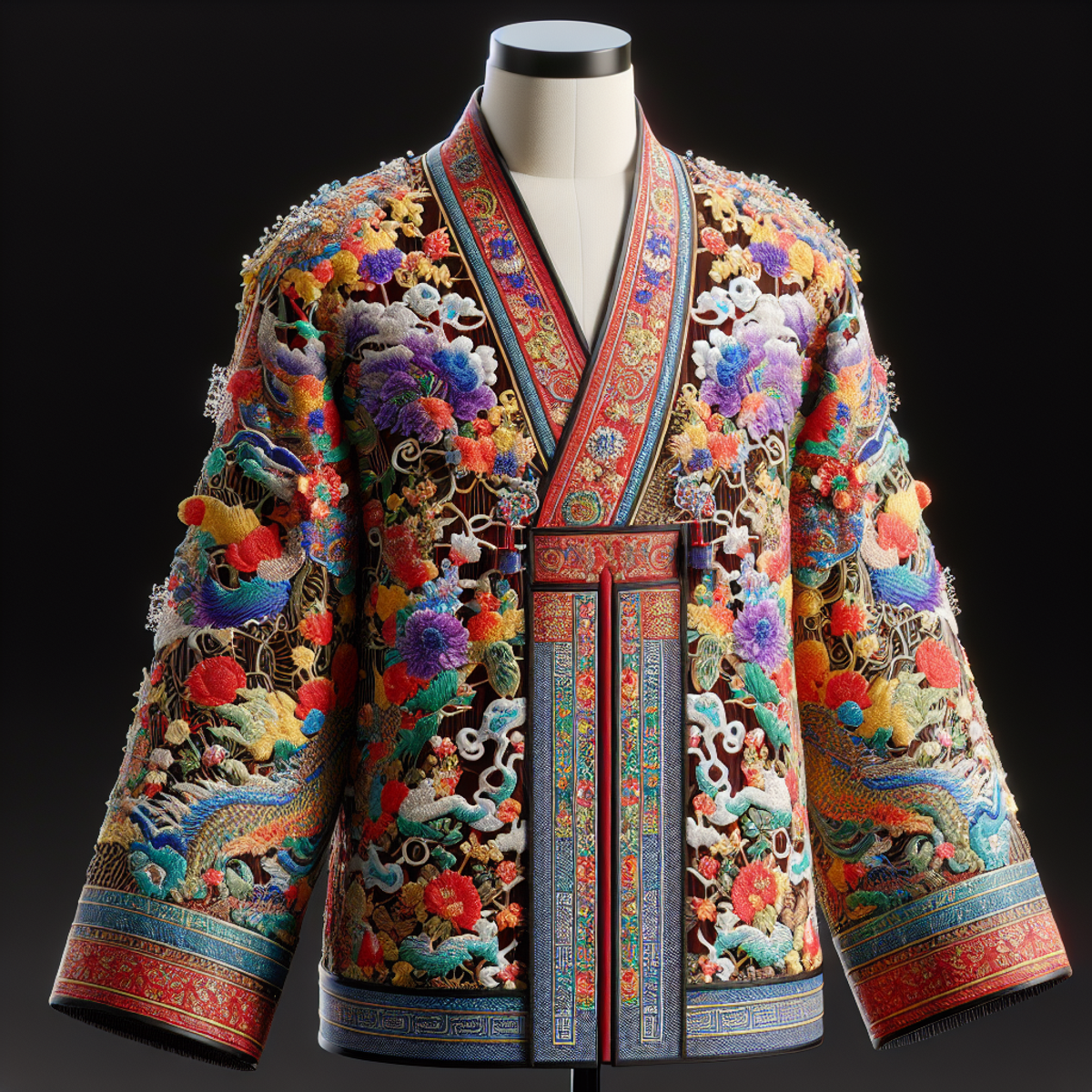
Introduction
Traditional Chinese clothing is an integral part of Chinese culture, with a rich history and cultural significance. In this article, we will delve into the world of traditional Chinese clothing, tracing its origins back to ancient times and examining two iconic styles: Hanfu and Qipao. From the intricate designs of imperial garments to the elegant simplicity of everyday wear, traditional Chinese clothing reflects both the traditions of different dynasties and the evolving tastes of modern fashion. Join us on this journey as we uncover the beauty and symbolism behind these timeless garments.
1. Ancient Chinese Clothing
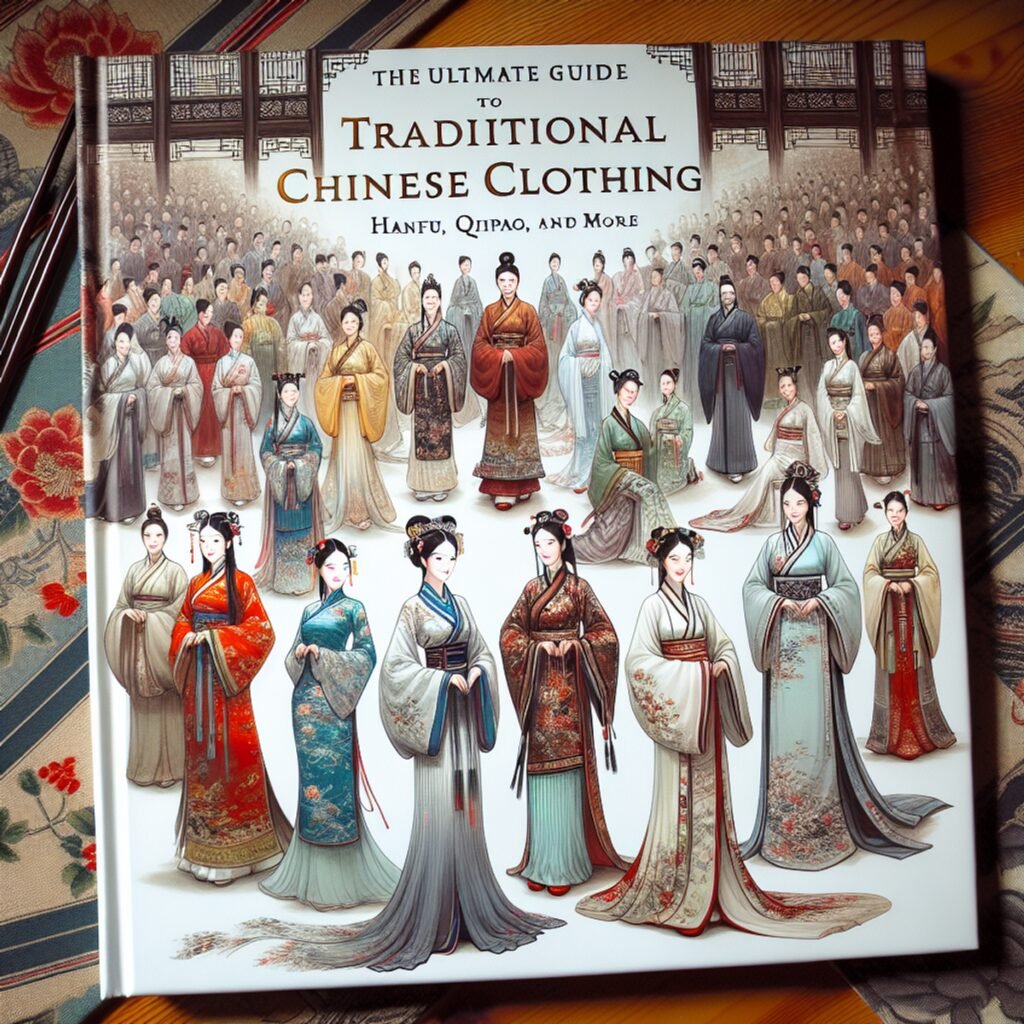
The history of ancient Chinese clothing dates back to the Paleolithic period, where early forms of clothing were crafted from animal skins and furs. This marked the beginning of clothing as a means of protection and insulation for the people of ancient China.
In the Neolithic Age, there was a revolutionary development in textile technology, leading to the production of woven fabrics for garments. This innovation significantly expanded the possibilities for clothing design and functionality, laying the foundation for the rich tradition of Chinese textiles.
One of the most significant contributions to ancient Chinese clothing was the emergence of silk production. Silk, a luxurious and highly prized fabric, became synonymous with elegance and sophistication in ancient China. Its introduction revolutionized the textile industry and elevated the status of Chinese clothing both domestically and internationally.
The evolution of ancient Chinese clothing reflects not only the advancements in textile technology but also the cultural and social significance attached to attire throughout different periods of history.
2. Han Dynasty: The Golden Age of Hanfu
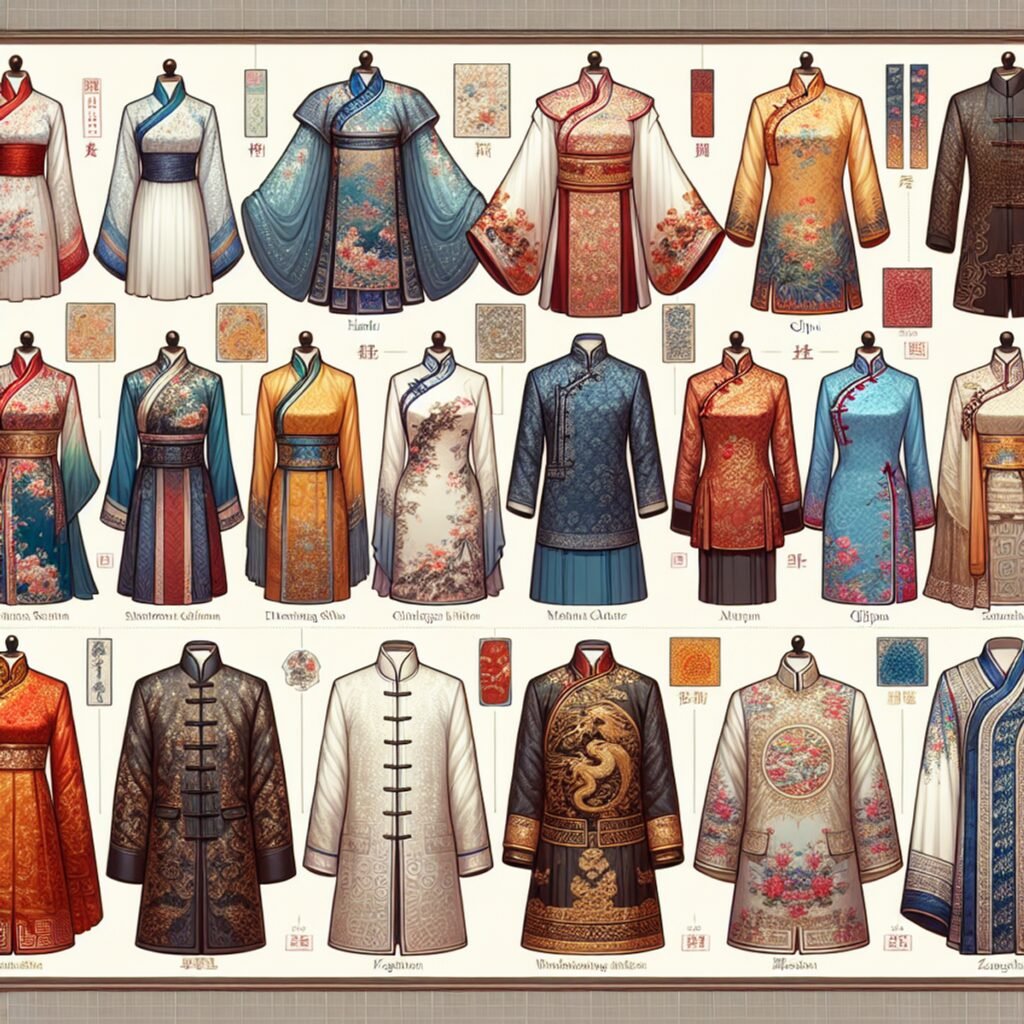
The Han Dynasty, from 206 BCE to 220 CE, was a crucial time for traditional Chinese clothing, especially the Hanfu. During this period, both men and women commonly wore Hanfu as their everyday attire, symbolizing beauty and sophistication in ancient China.
Unique Characteristics of Hanfu in the Han Dynasty
Hanfu during the Han Dynasty had distinct features that set it apart:
- Lightweight Silks: People favored lightweight silks for their clothes due to the hot weather. These fabrics were comfortable and allowed for better airflow.
- Intricate Embroidery: To showcase their skill and attention to detail, craftsmen adorned Hanfu with delicate embroidery.
- Significance of Collar Size: The size and shape of the collar indicated a person’s social status and fashion preferences. High-standing collars were exclusive to high-ranking officials and nobles.
2.1 Women’s Clothing in the Han Dynasty
Women in the Han Dynasty had a wide range of clothing options, each with its own style and design:
Layered Skirts
Layered skirts were a popular choice among women. They would wear multiple skirts on top of each other to create a graceful and voluminous appearance. These skirts were often crafted from luxurious silk fabrics, featuring vibrant colors and intricate patterns.
Flowing Silk Robes
Another common garment worn by women was flowing silk robes. These robes had loose-fitting sleeves and a long, elegant shape that emphasized femininity and elegance. By wearing silk robes, women showcased their social standing while highlighting their beauty and refinement.
Accessories
To complete their outfits, women would accessorize with various items:
- Hairpins: Elaborate hairpins added charm to hairstyles.
- Headdresses: Women wore headdresses to complement their overall look.
- Jewelry: Precious gemstones and intricate motifs adorned their jewelry, elevating their appearance.
These accessories were meticulously designed, showcasing the craftsmanship of the time and adding an extra touch of sophistication to women’s outfits.
The Beauty of Women’s Clothing in the Han Dynasty
Women’s clothing during the Han Dynasty represented ideals of beauty and grace. The diverse styles of Hanfu allowed women to express their individuality while still conforming to societal expectations.
The use of lightweight silks, intricate embroidery, and flowing silhouettes demonstrated the exceptional craftsmanship and fashion sense prevalent during this golden age of Hanfu.
Note: For more detailed information about specific types of Hanfu worn by women during the Han Dynasty, such as Ruqun and Aoqun, further research is recommended.
Sources:
3. Three Kingdoms Period: Where Aesthetics Meet War
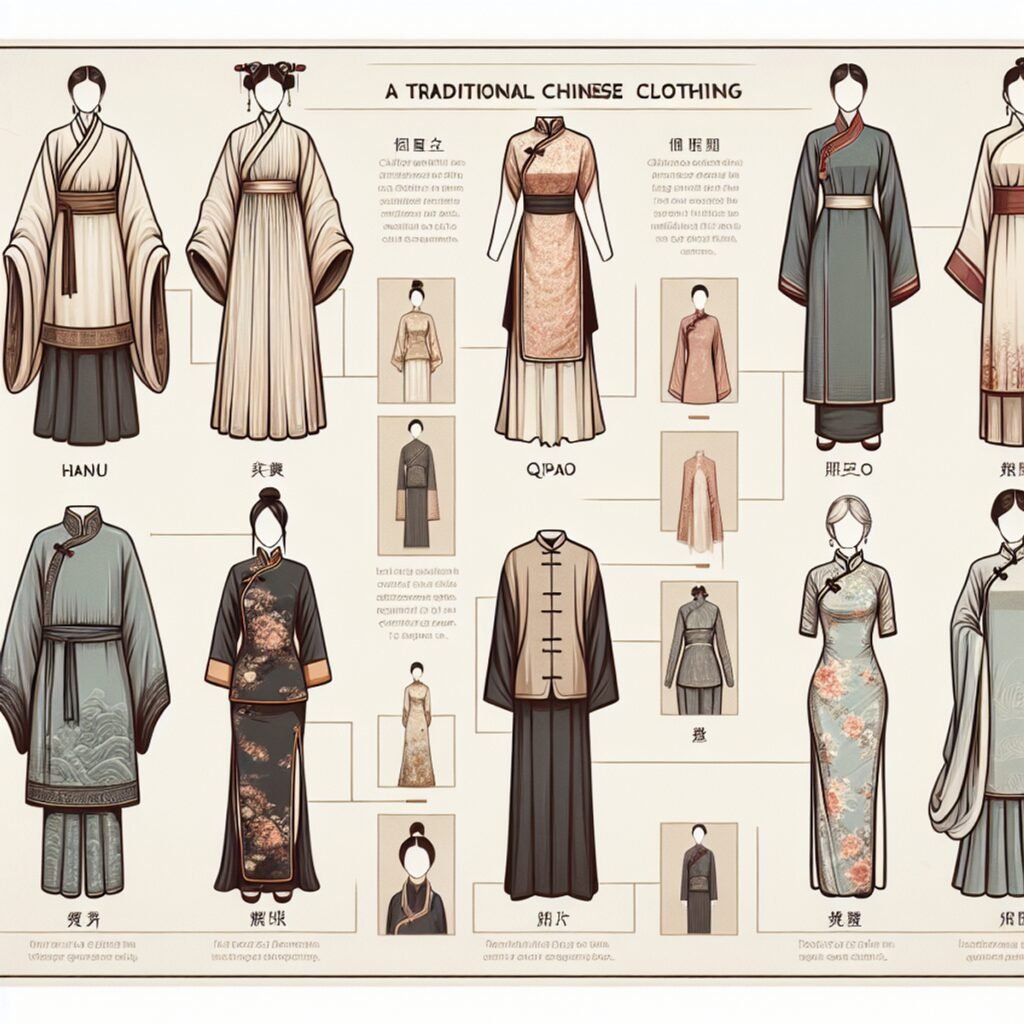
3.1 Women’s Clothing in the Three Kingdoms Period
During the Three Kingdoms period, women’s fashion underwent a fascinating evolution, reflecting the dynamic cultural landscape and the interplay between aesthetics and societal influences. The clothing styles of this era were characterized by bold color combinations and intricate embellishments, showcasing the fusion of artistry and practicality in ancient Chinese attire.
Fashion Trends
- Color Palette: Women’s clothing during this period embraced vibrant and rich hues, with a penchant for striking contrasts that captured the essence of vitality and creativity. The use of bold colors such as vivid reds, deep blues, and lush greens was emblematic of the bold spirit of the time.
- Embellishments: Intricate details and embellishments adorned women’s garments, symbolizing elegance and sophistication. Elaborate embroidery, delicate patterns, and ornate decorations added a touch of opulence to the attire, elevating it to an artistic expression of beauty and cultural refinement.
Cultural Significance
The fashion trends of the Three Kingdoms period not only reflected aesthetic sensibilities but also conveyed deeper cultural meanings. The bold color choices symbolized courage, passion, and resilience, mirroring the tumultuous historical backdrop of warfare and political strife. Furthermore, the meticulous embellishments showcased a reverence for craftsmanship and artistry, underscoring the value placed on creativity and individuality within society.
Symbolism in Attire
Women’s clothing in this period served as a canvas for storytelling, with each garment conveying narratives of heritage, identity, and personal expression. The intricate designs and vibrant colors spoke volumes about the wearer’s social standing, personal beliefs, and aspirations for the future.
In essence, the fashion trends of the Three Kingdoms period encapsulated a harmonious blend of artistic ingenuity and cultural symbolism, offering a glimpse into a bygone era where aesthetics flourished amidst the backdrop of historical transformation.
3.2 Men’s Clothing in the Three Kingdoms Period
During the Three Kingdoms Period, men’s clothing went through significant changes that reflected the turbulent era of war and political intrigue. The clothing of this time balanced beauty with usefulness, showing the influence of military uniforms and scholarly fashion.
1. Military Influence
The attire of men during the Three Kingdoms Period was notably influenced by military uniforms, emphasizing functionality and durability to suit the demands of warfare. This led to the prevalence of strong and practical garments designed to withstand the hardships of battle.
2. Scholarly Fashion
In contrast to the militaristic influence, elements of scholarly fashion also seeped into men’s clothing during this period. Scholars and intellectuals preferred attire that showed their refined tastes and cultural interests, resulting in a mix of gracefulness and usefulness in men’s fashion.
3. Gender Roles Influence
Traditional Chinese gender roles played a significant part in shaping men’s fashion during ancient times. The clothes worn by men often conveyed their societal roles, whether as warriors, scholars, or officials, capturing the broader cultural values and expectations of masculinity.
The dynamic interplay between practical military features and elegant scholarly elements in men’s clothing during the Three Kingdoms Period shows the many sides of traditional Chinese attire, reflecting the complexities of that historical time.
4. Revival and Reinvention: Hanfu in Modern Times
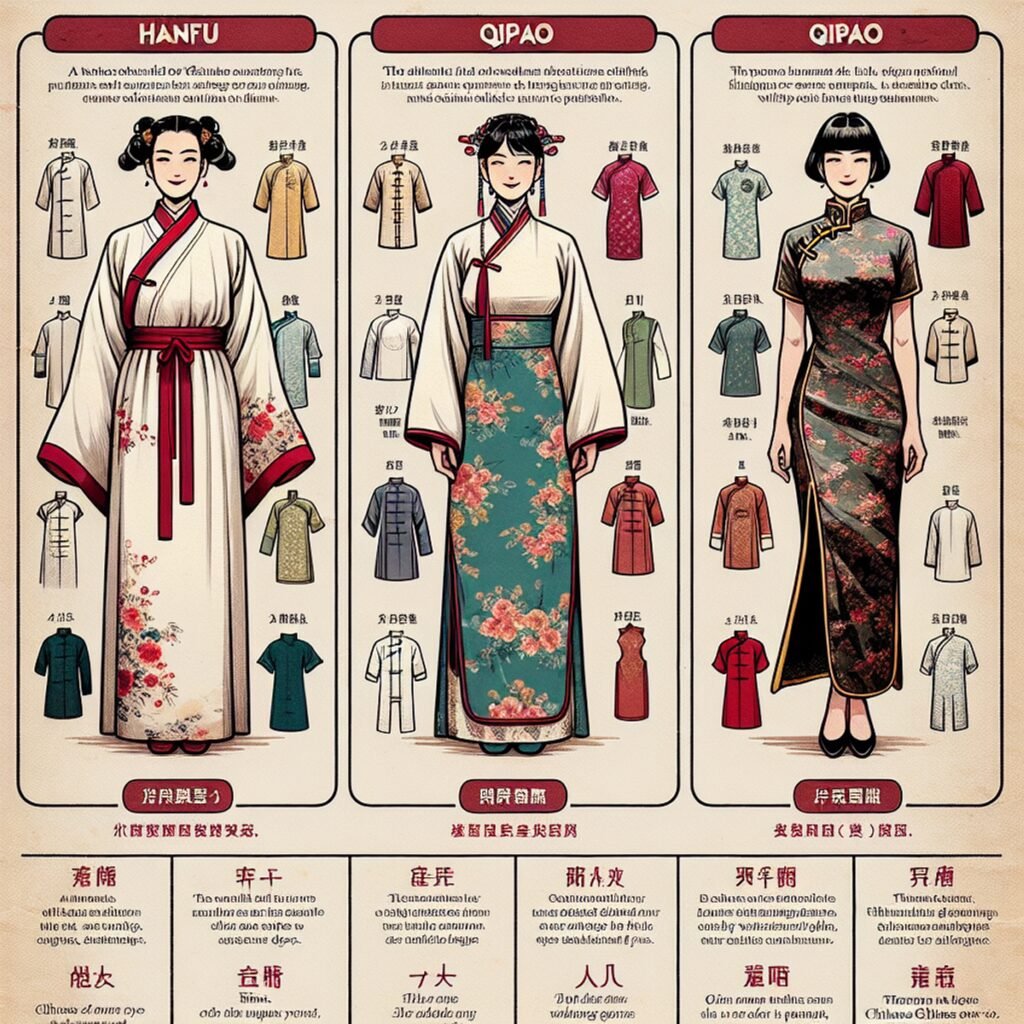
Hanfu Revival Movement
- The revival of Hanfu in recent decades has been a significant cultural phenomenon, driven by modern enthusiasts who are passionate about preserving and reinterpreting traditional Chinese clothing.
- Contemporary Hanfu enthusiasts seek to revive the elegance and grace of ancient attire, embracing the rich heritage of traditional Chinese clothing.
- This revival movement goes beyond simple fashion trends, aiming to reclaim and celebrate the cultural significance of Hanfu.
Reinterpreting Cultural Heritage
- Modern practitioners of Hanfu are dedicated to meticulously researching historical clothing patterns and fabric materials, striving to recreate authentic garments from ancient dynasties.
- Through their attire, they honor the legacy of traditional Chinese clothing and contribute to the preservation of this invaluable aspect of Chinese cultural heritage.
- The contemporary reinterpretation of Hanfu reflects a deep appreciation for the timeless beauty and cultural symbolism embedded in traditional Chinese attire.
5. The Timeless Charm of Qipao (Cheongsam)
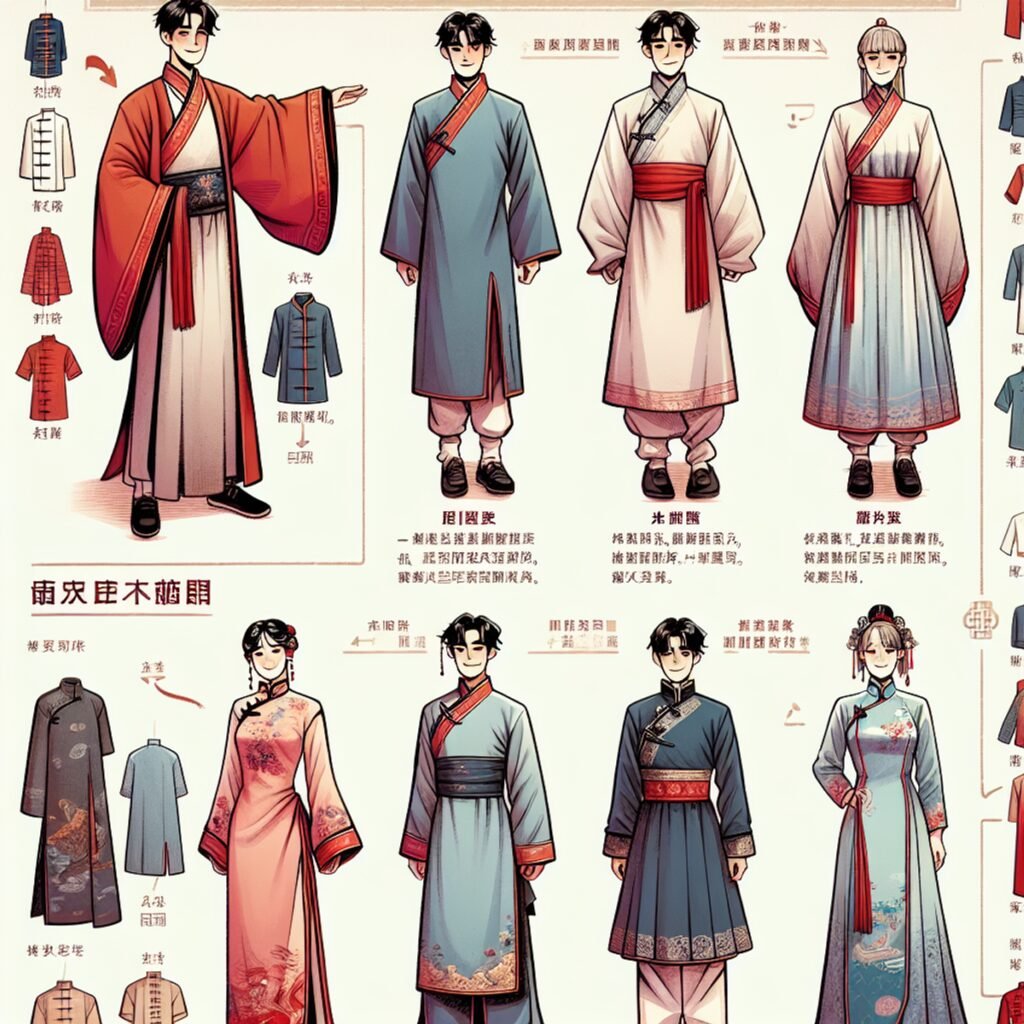
The Qipao, also known as the Cheongsam, is another iconic traditional Chinese garment that holds a timeless charm. It originated in the late Ming Dynasty but gained its signature form under Manchu rule in the Qing Dynasty. The Qipao was initially a loose-fitting dress with a simple design, but it underwent significant changes over time.
Transformation under Manchu Rule
During the Qing Dynasty, the Manchu influence transformed the Qipao into a more fitted and elegant outfit. The dress became narrower and adopted a high collar, which symbolized modesty and grace. The use of luxurious silk fabrics and intricate embroidery added to its beauty and sophistication.
Influence of Shanghai in the 20th Century
In the early 20th century, Shanghai played a crucial role in shaping the modern image of the Qipao. Western tailoring techniques were incorporated into the design, resulting in a more form-fitting silhouette that accentuated the female figure. This fusion of traditional Chinese elements with Western influences made the Qipao a symbol of modern femininity during the Shanghai fashion era.
Popularity and Significance
The Qipao became popular among fashionable women in both China and abroad. It was often worn for special occasions such as weddings, parties, and important social events. The dress exuded elegance and grace, making it an embodiment of Chinese culture and style.
Continuation and Evolution
Today, the Qipao continues to be cherished and worn by women who appreciate its beauty and cultural significance. It has evolved further to cater to contemporary fashion trends while staying true to its traditional roots. Modern variations may feature different fabrics, colors, and embellishments while retaining the essence of the classic Qipao design.
Enduring Appeal
The timeless charm of the Qipao lies in its ability to blend tradition with modernity, capturing the imagination of people worldwide. It serves as a testament to the enduring allure of traditional Chinese clothing and its ability to adapt to changing times while preserving its cultural heritage. For those interested in delving deeper into the subject, this academic article provides a comprehensive exploration of the Qipao’s historical and cultural significance.
6. Embracing Tradition: Wearing Hanfu and Qipao Today
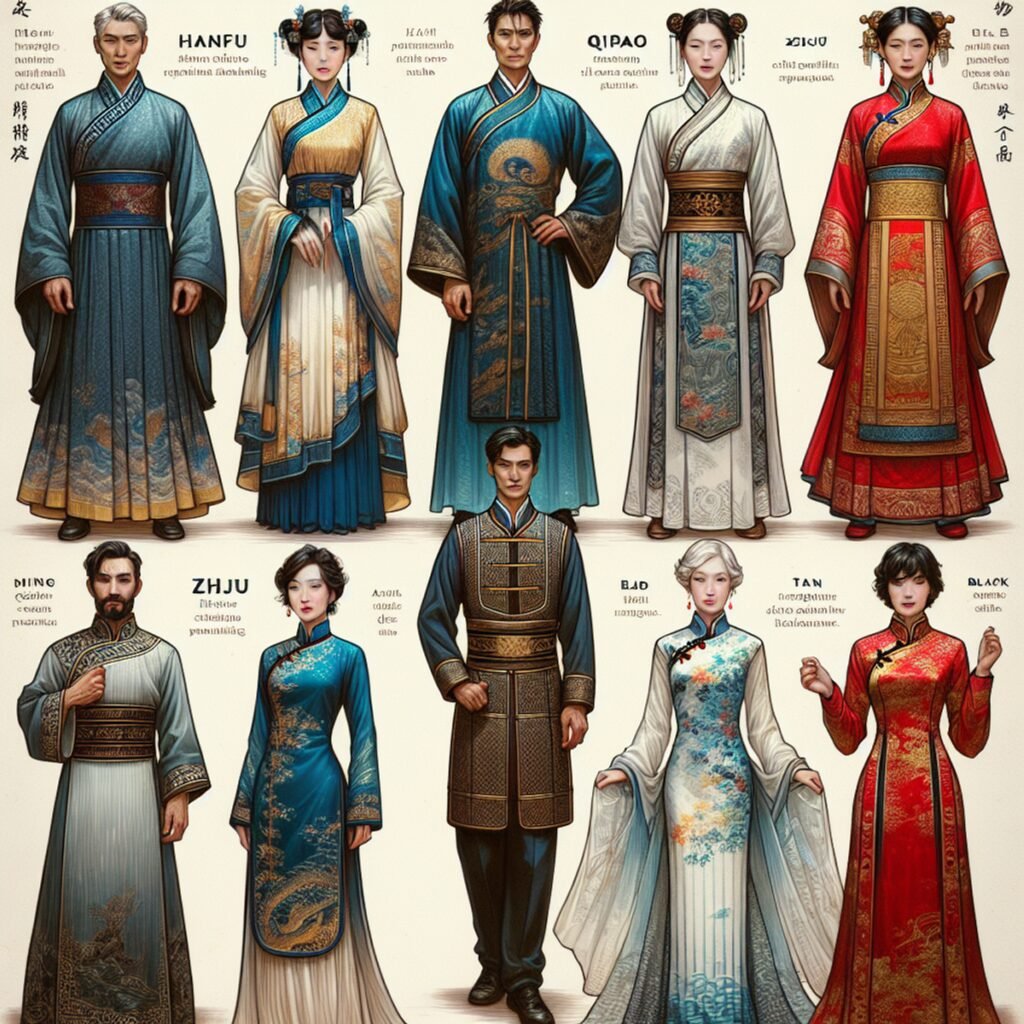
Wearing traditional Chinese clothing like Hanfu and Qipao has become a popular way for individuals to connect with their cultural heritage and express their personal style. Beyond just special occasions or performances, donning these garments in contemporary settings holds great cultural significance.
Cultural Significance of Wearing Hanfu and Qipao
- Preserving Tradition: Wearing Hanfu and Qipao allows individuals to honor and preserve the rich history and traditions of Chinese culture. It is a way to pay homage to the ancestors and celebrate the beauty of traditional clothing.
- Sense of Identity: By wearing Hanfu or Qipao, individuals can feel a deeper connection to their Chinese roots. It helps them embrace their cultural identity and showcases their pride in Chinese heritage.
- Symbol of Elegance: Both Hanfu and Qipao are known for their exquisite craftsmanship, intricate designs, and elegant silhouettes. Wearing these garments can make one feel graceful, sophisticated, and confident.
Incorporating Hanfu or Qipao into Personal Style
If you are interested in incorporating elements of Hanfu or Qipao into your personal style, here are some practical tips to consider:
- Start with Accessories: Begin by adding traditional accessories such as hairpins, silk scarves, or embroidered purses to your everyday outfits. These small touches can add a touch of Chinese elegance without being too overwhelming.
- Mix and Match: Experiment with incorporating traditional Chinese elements into modern outfits. For example, pair a Qipao top with jeans or a Hanfu-inspired blouse with a skirt. This fusion of old and new creates a unique and stylish look.
- Choose Modern Designs: Opt for modern adaptations of Hanfu or Qipao that blend traditional elements with contemporary fashion trends. Look for pieces that have a modern cut or incorporate Western fabrics or patterns.
- Respect Cultural Context: While it’s exciting to embrace traditional Chinese clothing, it’s essential to respect the cultural context and history behind these garments. Educate yourself about the significance of each style and wear them with reverence.
By wearing Hanfu or Qipao in your daily life, not only can you celebrate Chinese culture and tradition, but you can also create a unique style statement that reflects your individuality and appreciation for the beauty of traditional clothing.
Preserving Heritage Through Clothing
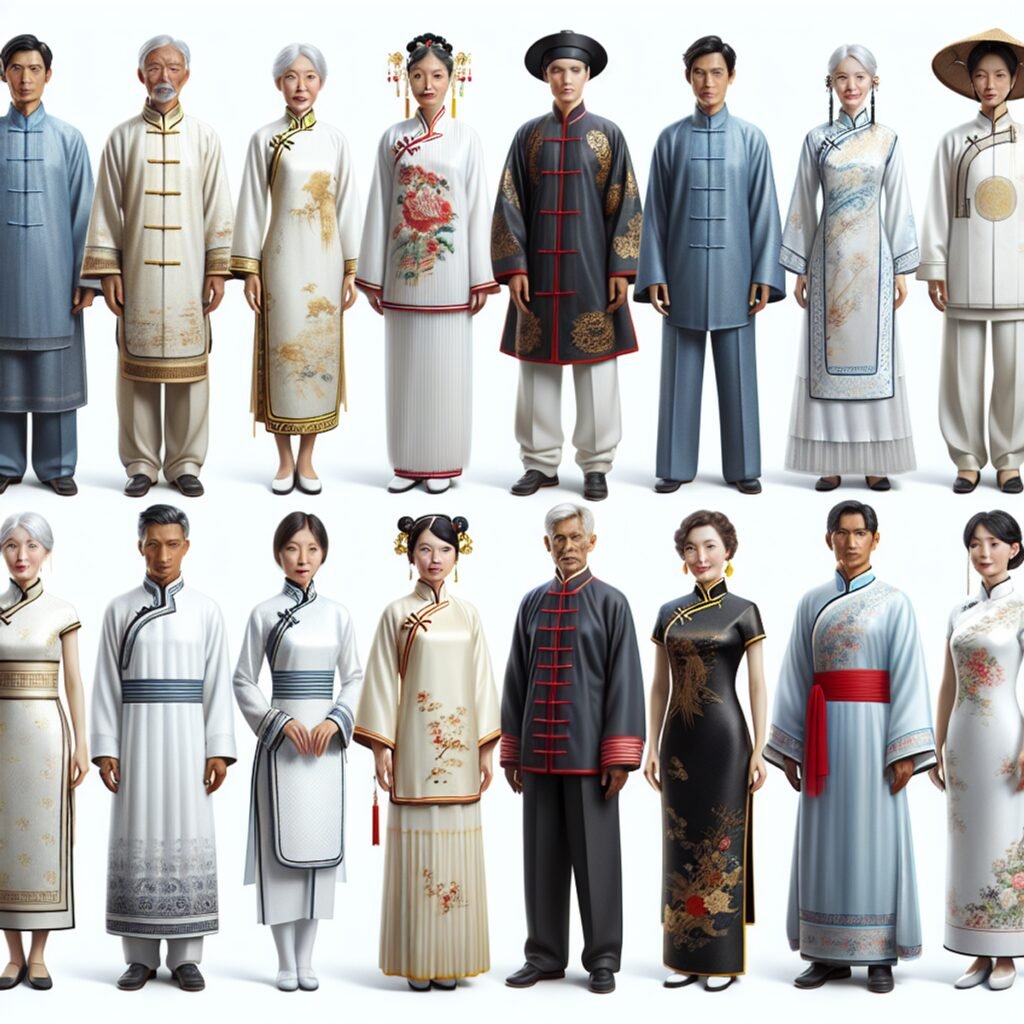
Preserving traditional Chinese clothing is not just about maintaining the physical garments themselves; it is also a way to preserve cultural identity in a rapidly globalizing world. By embracing and celebrating traditional Chinese clothing, individuals can connect with their rich history and heritage. Here are some key points to consider:
- Cultural Identity: Traditional Chinese clothing reflects the values, beliefs, and traditions of Chinese culture. It serves as a visual representation of one’s cultural identity and can foster a sense of pride and belonging.
- Historical Significance: Traditional Chinese garments have a long and storied history, dating back thousands of years. Each garment carries with it the stories, customs, and symbolism of different dynasties and eras. By preserving these garments, we preserve a tangible link to our past.
- Craftsmanship and Artistry: Traditional Chinese clothing is known for its intricate craftsmanship, meticulous attention to detail, and exquisite embroidery. Supporting local artisans who specialize in creating these garments helps ensure that their skills and techniques are passed down to future generations.
- Revitalizing Tradition: Wearing traditional Chinese clothing not only preserves the past but also revitalizes it for the present and future. It allows us to reinterpret traditional designs in contemporary contexts, creating new possibilities for self-expression while still respecting cultural authenticity.
- Community Connection: Embracing traditional Chinese clothing fosters a sense of community among enthusiasts who share a passion for preserving this cultural heritage. Engaging with like-minded individuals through events, workshops, or online platforms can provide valuable opportunities for learning, collaboration, and celebration.
By preserving traditional Chinese clothing and supporting local artisans, we contribute to the continuation of this rich cultural legacy. Whether it’s wearing Hanfu or Qipao or exploring other variations of indigenous Chinese dresses, embracing traditional clothing allows us to honor our heritage while celebrating the diversity and beauty of Chinese culture.
The Future of Traditional Chinese Clothing
Traditional Chinese clothing has made a splash in the fashion world, but what lies ahead for this timeless style in today’s industry? There are exciting possibilities on the horizon, as well as some obstacles to navigate. Let’s explore the future of traditional Chinese clothing and how it can thrive in the ever-changing world of fashion.
Challenges and Opportunities
Balancing Innovation and Cultural Authenticity
One of the key challenges for traditional Chinese clothing is finding the right balance between staying true to its cultural roots and embracing new ideas. While it’s important for this style to evolve with the times, it must also retain its unique heritage. This delicate dance between innovation and cultural authenticity is crucial for designers and fashion enthusiasts alike.
Preserving Craftsmanship
Another challenge comes in the form of preserving the intricate craftsmanship that goes into making traditional Chinese garments. These pieces are often handcrafted using age-old techniques passed down through generations. However, with fewer skilled artisans practicing these crafts, there’s a risk of losing this valuable knowledge. To ensure the future of traditional Chinese clothing, we must find ways to train new artisans and raise awareness about the importance of these skills.
Fashion Sustainability
In recent years, there has been a growing emphasis on sustainability in the fashion industry. This shift towards more eco-friendly practices presents both a challenge and an opportunity for traditional Chinese clothing. By embracing sustainable principles, this style can not only reduce its environmental impact but also appeal to a wider audience who values conscious consumption. Here are some ways in which sustainability can be incorporated:
- Ethical Sourcing: Making sure that materials used in traditional Chinese garments are ethically sourced, taking into account factors such as fair trade and environmental sustainability.
- Slow Fashion: Encouraging a move away from fast fashion towards slow fashion practices, which prioritize quality over quantity. This approach promotes longer-lasting garments and discourages wasteful trends.
- Cultural Education: Increasing awareness about the significance of traditional Chinese clothing and its cultural value can foster appreciation for its craftsmanship, leading to a greater demand for sustainable production methods.
By embracing these sustainable practices, traditional Chinese clothing can position itself as a responsible player in the fashion industry while staying true to its roots.
“The future of traditional Chinese clothing lies in our hands. By embracing innovation, preserving our heritage, and adopting sustainable practices, we can ensure that this beautiful art form continues to thrive for generations to come.”
Conclusion
Traditional Chinese clothing, including Hanfu and Qipao, holds a rich tapestry of history, culture, and artistry. Embracing these timeless garments allows you to weave your own narrative while honoring the heritage of this exquisite fashion tradition. As you explore the myriad styles and influences within traditional Chinese clothing, you have the opportunity to infuse your personal style with a touch of elegance and cultural significance.
- Infusing Modern Fashion with Timeless Elegance: Incorporating elements of traditional Chinese clothing into your wardrobe can add a unique flair to your fashion choices, allowing you to stand out with sophistication and grace.
- Celebrating Cultural Diversity: By embracing Hanfu, Qipao, and other traditional Chinese garments, you are not only celebrating the beauty of these attire but also paying homage to the diverse cultural tapestry of China.
- Connecting with History: Each garment has a story to tell, reflecting the dynastic traditions, social structures, and artistic expressions of ancient China. By wearing traditional Chinese clothing, you become a part of this living history.
By wearing traditional Chinese clothing in contemporary settings, individuals can express their appreciation for Chinese culture and fashion while adding a touch of timeless charm to their personal style. Whether it’s for special occasions or everyday wear, traditional Chinese clothing offers a captivating way to express individuality while honoring centuries-old sartorial traditions.
FAQs (Frequently Asked Questions)
What is the significance of traditional Chinese clothing in Chinese culture?
Traditional Chinese clothing holds great significance in Chinese culture as it reflects the rich heritage and history of the country. It serves as a visual representation of the values, beliefs, and aesthetic sensibilities that have been passed down through generations.
What are the earliest forms of clothing in ancient China?
The earliest forms of clothing in ancient China consisted of animal skins and furs during the Paleolithic period. This eventually evolved with the development of textile technology in the Neolithic Age, leading to the production of woven fabrics for garments.
What is Hanfu and why is it significant?
Hanfu refers to traditional Han clothing that gained prominence during the Han Dynasty. It is significant due to its unique fabric characteristics, such as the use of lightweight silks and intricate embroidery, as well as its influence on modern fashion trends.
How did women’s fashion trends evolve during the Three Kingdoms Period?
During the Three Kingdoms Period, women’s fashion trends showcased dynamic changes, including bold color combinations and intricate embellishments that reflected the cultural styles and aesthetic concepts of that era.
What is the modern revival movement of Hanfu about?
The modern revival movement of Hanfu aims to preserve and reinterpret this cultural heritage through contemporary attire. Enthusiasts seek to revive traditional Chinese clothing by incorporating elements of Hanfu into modern fashion, thereby keeping this tradition alive.
How did the Qipao (Cheongsam) evolve over time?
The Qipao (Cheongsam) originated in the late Ming Dynasty but gained its signature form under Manchu rule in the Qing Dynasty. It later evolved into a symbol of modern femininity during the Shanghai fashion era, blending traditional Chinese elements with Western tailoring techniques.
